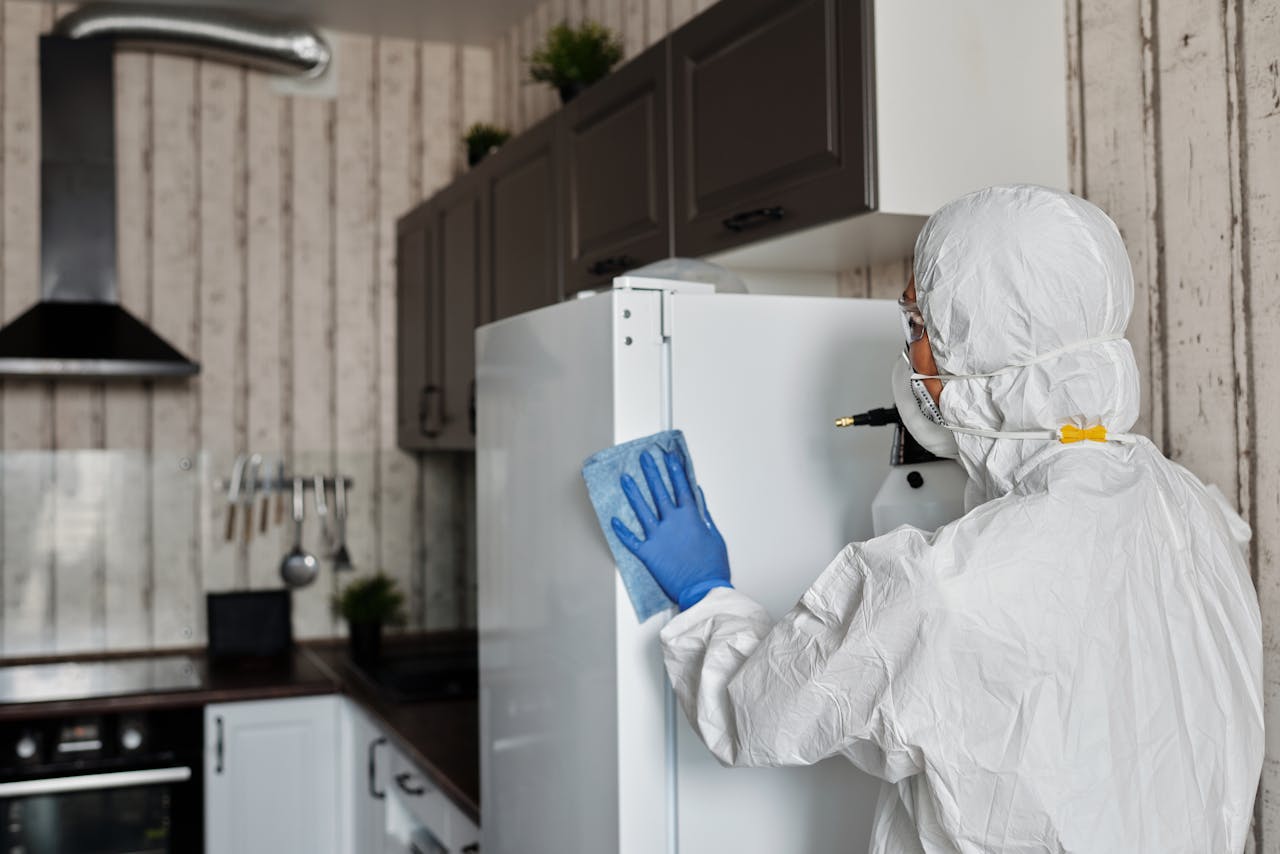Cross-contamination is a significant concern in any size of a kitchen. It’s an issue you cannot afford to overlook, particularly in a commercial kitchen where you’re responsible for the health and well-being of your customers. Cross-contamination refers to the unintentional transfer of bacteria or other harmful microorganisms from one substance to another. In a kitchen setting, this often happens through shared use of kitchen utensils and equipment, and improper handling of raw food, particularly meat. Fortunately, there are several effective strategies to prevent cross-contamination and ensure the safety of food.
Understanding Cross-Contamination
Before you can effectively prevent cross-contamination, it’s crucial to understand how it occurs. In a commercial kitchen, cross-contamination can happen in numerous ways, but most commonly through shared utensils and equipment, contact with raw foods, especially raw meat, and inadequate cleaning of surfaces.
Additional reading : What are the best eco-friendly cleaning products for restaurant kitchens?
Even the smallest amount of bacteria can quickly multiply into millions, leading to severe foodborne illnesses. Therefore, maintaining a clean and sanitary kitchen environment is paramount.
Proper Handling and Storage of Foods
One of the most effective ways to prevent cross-contamination is to handle and store foods correctly. Raw foods, in particular, are high-risk items as they often contain harmful bacteria that can easily spread to ready-to-eat foods.
Also read : What are the best eco-friendly cleaning products for restaurant kitchens?
Never store raw meat above other foods in the fridge. Juices from the raw meat can drip down and contaminate the food below. Always keep raw foods sealed in airtight containers and stored at the bottom of the refrigerator.
Also, distinguish between different cutting boards and utensils for raw foods and cooked foods. Doing so will prevent the transfer of bacteria from raw to cooked food, a common cause of foodborne illness.
Regular Cleaning of Kitchen Equipment and Utensils
Another effective strategy to prevent cross-contamination is the regular and thorough cleaning of kitchen equipment and utensils. Every item in your kitchen that comes into contact with food can potentially harbor harmful bacteria, so regular, thorough cleaning is essential.
Start by ensuring your cleaning water is hot and use a commercial-grade detergent. Scrub all surfaces and utensils thoroughly, including handles and undersides, where bacteria may hide. Rinse them thoroughly to remove any detergent residue, then leave them to air dry. Avoid using towels for drying as they can harbor bacteria and cause re-contamination.
Regularly clean and sanitize all kitchen surfaces, including cutting boards, countertops, and stovetops. It’s particularly crucial to clean up any spills immediately to prevent bacteria from multiplying and spreading.
Personal Hygiene and Staff Training
Personal hygiene plays a vital role in preventing cross-contamination. Ensure all kitchen staff wash their hands thoroughly with soap and warm water for at least 20 seconds before handling food, and after handling raw food, waste, or touching their face, hair, or any part of their body.
Moreover, staff training is equally important. All staff members should be trained on food safety practices, including proper food storage, cleaning procedures, and personal hygiene. They should also understand the potential consequences of cross-contamination, including the risk of foodborne illness.
Implementing a Food Safety Management System
Implementing a food safety management system is a comprehensive approach to prevent cross-contamination. This system includes practices like Hazard Analysis Critical Control Point (HACCP) that identifies potential hazards in your kitchen and establishes strict control measures.
You can also consider regular third-party audits to verify your food safety practices. Audits can provide valuable feedback and help you identify areas for improvement.
In the end, preventing cross-contamination in a small commercial kitchen is about being diligent, thorough, and consistent with your food safety practices. It requires a team effort from all staff members, from those who handle food to those who clean the kitchen. Remember, it’s not just about meeting legal requirements; it’s also about protecting the health of your customers and maintaining the reputation of your business.
Hygienic Food Preparation Practices
In order to prevent cross-contamination in commercial kitchens, it is vital to maintain high standards of hygiene during food preparation. This involves paying close attention to the handling of raw meat, poultry, and seafood, which are known to harbor harmful bacteria that can easily be transferred to other foods, causing foodborne illness.
Always wash hands before and after handling raw meat. Use disposable gloves if necessary. Moreover, be mindful not to touch other food items or surfaces after handling raw meat without washing hands first. This can lead to cross contact, a common cause of food contamination.
Furthermore, always use separate cutting boards for raw meat, poultry, and seafood. This will help prevent harmful bacteria from contaminating other foods. Similarly, all kitchen equipment used for raw meat should be cleaned and sanitized immediately after use. This includes knives, tongs, and other utensils.
It is also vital to keep raw meat, poultry, and seafood separate from other foods in the refrigerator. This is crucial to prevent juices, which may contain harmful bacteria, from dripping onto other foods.
Conclusion
In conclusion, the prevention of cross-contamination in a small commercial kitchen is not just a legal obligation, rather it is a commitment towards the health and safety of the customers. It involves a multi-faceted approach that includes understanding the concept of cross-contamination, proper food handling and storage, regular cleaning of kitchen equipment, maintaining personal hygiene and implementing a robust food safety management system.
Moreover, ongoing staff training in food safety practices is vital to keep everyone updated about new procedures and regulations. This will ensure that all staff members understand the importance of their roles in preventing cross-contamination.
Remember, a clean kitchen is a healthy kitchen. And a healthy kitchen leads to satisfied customers and a successful business. Therefore, always be diligent, thorough, and consistent in your endeavors to prevent cross-contamination.






